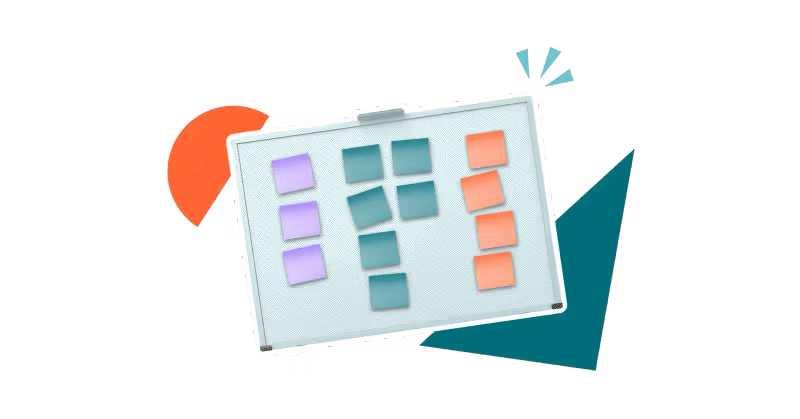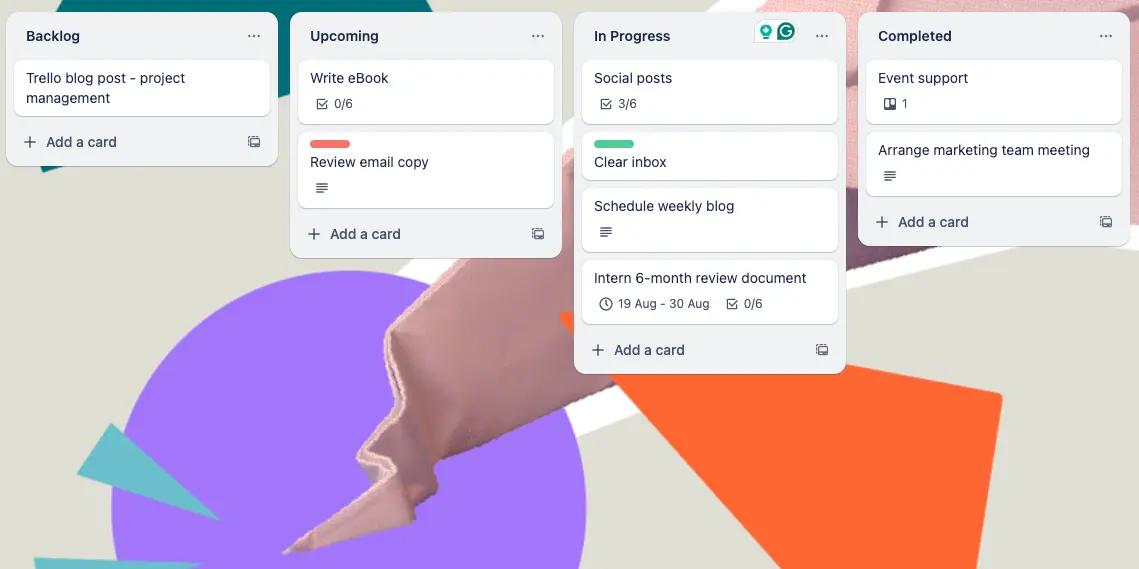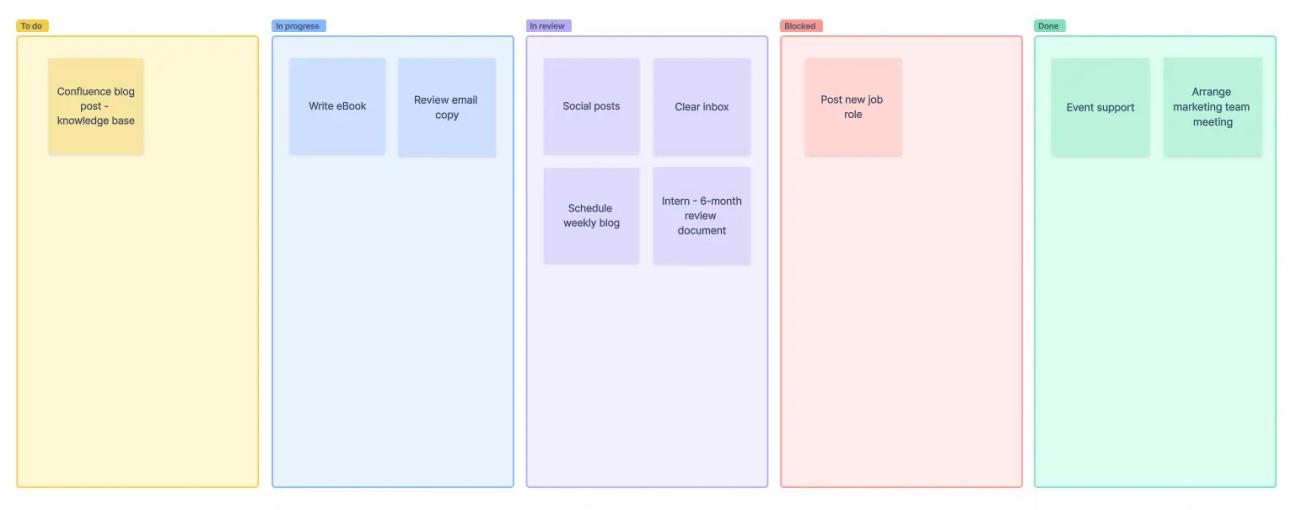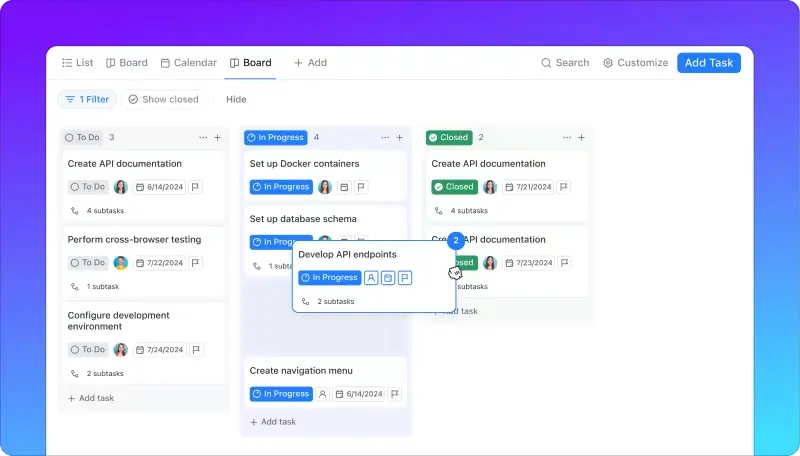What is Kanban? The simple but effective way to manage tasks
Share on socials
What is Kanban? The simple but effective way to manage tasks

Jump to Section
Jump to section
What is Kanban?
How the Kanban approach works
Using Kanban - a quick example
The best apps for Kanban
If you want to learn about Kanban, you’re in the right place! We demystify the simple but effective task management tool.
Are your tasks off-track? If you need a better way to manage team projects or even keep track of your own work, Kanban might be for you!
Kanban is a great tool for helping you focus on your tasks. It can also help you put pesky distractions to bed and minimise context switching. Let’s explore.
Kanban is a great tool for helping you focus on your tasks. It can also help you put pesky distractions to bed and minimise context switching. Let’s explore.
What is Kanban?
Kanban is a visual approach to project management. It uses a board called a Kanban board with different columns to represent steps in your workflow. Each task is a separate card on the board, and the card moves across the columns as work progresses.
Kanban is a simple but effective way to keep track of work across teams and boost productivity.
Kanban is a simple but effective way to keep track of work across teams and boost productivity.
How the Kanban approach works
1. Plan everything that needs to get done in order to complete the project
List every task that needs to be completed from beginning to end - or go ahead and put them straight onto your Kanban cards. Each card should have one task written on it, though some online cards give you the option to add subtasks or checklists under the main task, too.
2. Choose how to name each of your workflow stages
A common convention for this is also a simple one: ‘To Do’, ‘In Progress’, ‘Completed’. You will be placing your cards into and between each of these sections on the board.
3. Consider prioritising your tasks
Though all of your tasks will be in your To Do section (or another name you’ve decided to go with), that doesn’t stop you from prioritising them. Use colours or labels to clearly show which tasks should be focused on first. This will help your workflow by making sure that tasks that the completion of other tasks depend on get done.
4. Put limits on how much work is in-progress at one time
It might sound counter-intuitive, but reducing how many tasks are being worked on helps boost productivity by reducing multi-tasking and burnout.
5. Take on tasks you wouldn’t usually tackle
Kanban encourages collaboration, with tasks on the board up for grabs by any member of the team. If you’re comfortable, try completing a task outside of your usual work realm, or help another member of your team to complete their task.
6. Clearly show who’s working on each task
Because tasks aren’t assigned to any particular person, it’s important to be clear about whether someone is already working on a task. Make sure to show somewhere on the card that somebody has claimed the task.
Using Kanban - a quick example
A Kanban board will have several columns to represent different steps in your workflow. For instance, a simple board might have the following steps:
- Backlog
- To do
- In progress
- Stuck
- Complete
From here, you need to add your tasks to your Kanban board. Each task needs its own card and should have a title, description, assignee, and a due date (if it’s applicable). Add them to the relevant column.
Don’t forget to add tasks to your Backlog column! These are tasks that are yet to start but will be coming up soon. This helps you get on with work quicker by already having tasks ready to go.
Finally, start moving your tasks through the Kanban board. If a task is in To Do and you start it, put its card in In Progress. If anything comes up that stops your progress, you can move it to Stuck. Finally, when the task is done, move the card to Complete.
The best apps for Kanban
Though you can create physical Kanban boards and cards by hand using paper and a pen, the easiest way to share your tasks is using an app. Here are three handy apps:
Trello
Trello is the simplest and easiest Kanban app to use. Whether you’re tackling tasks solo or working as a team, you can scale your board (and your workspace - which holds boards for each individual project) to your needs.
What makes it particularly powerful is what you can do with your cards. It’s possible to colour code, tag users, add checklists, and even add time-frames to keep projects on track.
What makes it particularly powerful is what you can do with your cards. It’s possible to colour code, tag users, add checklists, and even add time-frames to keep projects on track.

If you know what you want to use your board for but don’t know where to start, there’s even a library of Trello templates to get you set up quicker.
Trello comes with a marketplace of Power-ups to customise it however you want. Whether you want to integrate it with your Google Workspace or delete Trello cards in one click, there will be a Power-up to help you.
Trello comes with a marketplace of Power-ups to customise it however you want. Whether you want to integrate it with your Google Workspace or delete Trello cards in one click, there will be a Power-up to help you.
Confluence
While not completely Kanban-based, Confluence is a powerful collaboration platform. The software pulls project management, documentation, and note-taking together in one handy place, making it one of the best knowledge management tools around.

It’s easy to create a Kanban board using Confluence whiteboards with the built-in template. If your company uses Jira, you can even create issues from the individual cards!
While the cards and board are less feature-heavy than those of Trello, it’s an easy and quick way to pull together tasks that you can add to your project update pages in Confluence.
While the cards and board are less feature-heavy than those of Trello, it’s an easy and quick way to pull together tasks that you can add to your project update pages in Confluence.
ClickUp
A highly customisable collaboration tool with List, Calendar, and Kanban board views to boot, ClickUp is perfect for bigger teams and businesses.

Image courtesy of ClickUp
ClickUp’s toolset is more comprehensive than Trello, but whether you want all these added extras depends on your needs. So if you like the look of Trello but want a more feature-rich experience (for example, you don’t only want to use Kanban), ClickUp might be ideal for you.
Take project management to the next level with our useful guides!
Written by

Senior Content Marketing Manager
With a 20-year career in content marketing, Simon has represented a range of international brands. His current specialism is the future of work and work management. Simon is skilled at launching content pipelines, establishing powerful brands, and crafting innovative content strategies.



